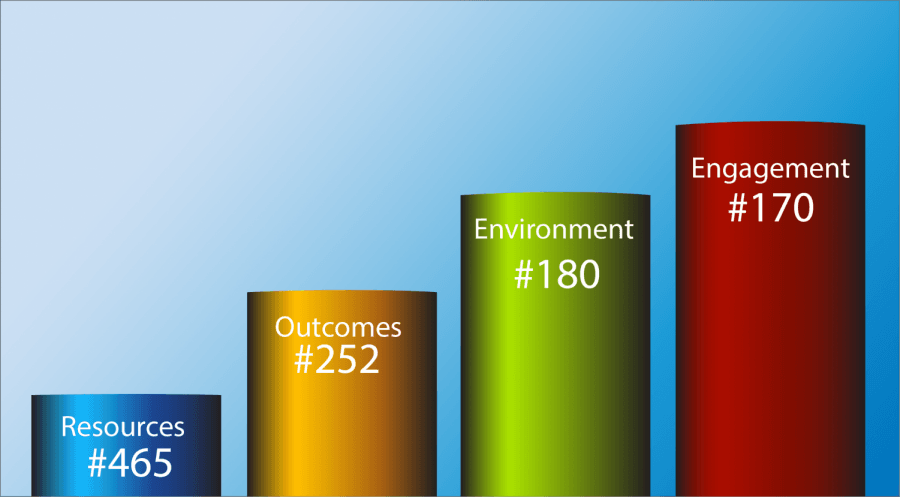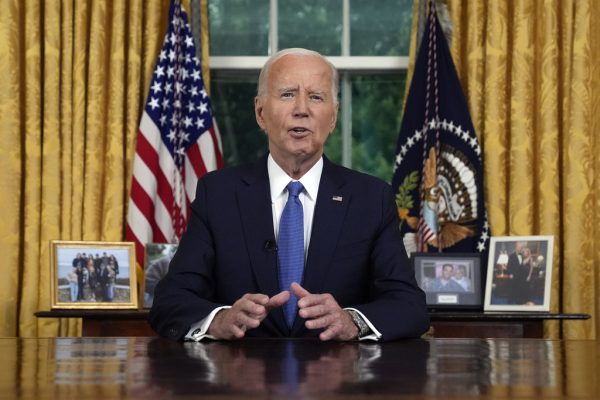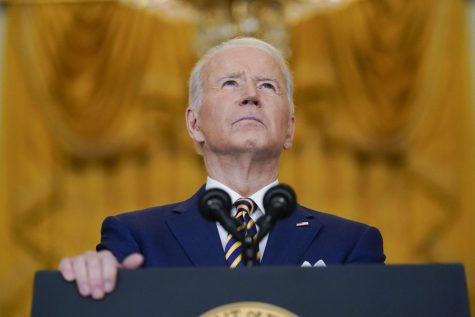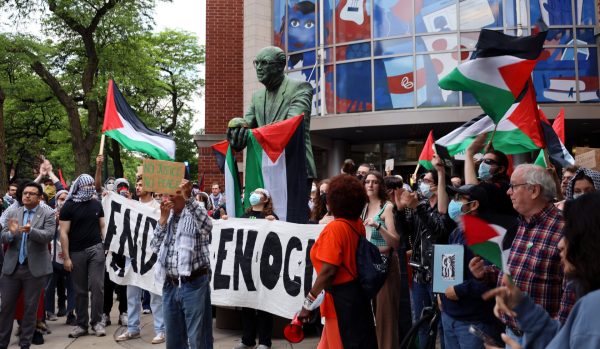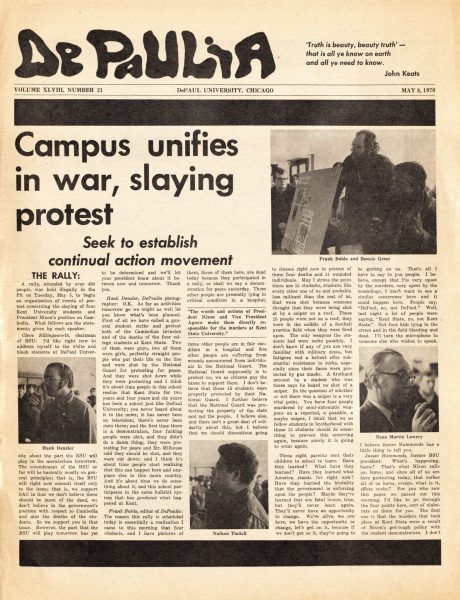As DePaul’s national ranking slips over last four years, do students even care?
Cars, sports teams, apps, neighborhoods, travel destinations — people love to rank things. There’s something we can’t resist about a good list, or a headline that promises to let us in on the top 10 best or worst of something. And colleges aren’t safe from our obsession with numerical rankings, either. Just as we rate the hottest cities to live in or the very best ways to eat kale, we order up colleges and universities around the country to decide who’s winning.
The problem is: how do you really rank a college, institutions that are so much more complex than food or an app? Especially when two universities are completely different; harder even to judge is when schools are very similar.
“They are trying to put a number on something we don’t think of as being hierarchical,” said Jon Boeckenstedt, associate vice president of enrollment management and marketing at DePaul. “Take DePaul versus Loyola. Very similar intuitions, same city, similar alumni, but there would be DePaul students who would be happier at Loyola and Loyola students who would be happier at DePaul.”
While some think it’s impossible to measure schools against one another, the Wall Street Journal and Times Higher Education (WSJ/THE) have taken a shot at it in their recently published 2019 college rankings report. The comprehensive report looks at almost 1,000 colleges and universities across the country, and ranks them based on a selection of criteria, focusing heavily on outcomes, value, and resources that a school provides a student.
DePaul came in at 257 in this year’s rankings, up from its previous spot at 281 in 2018. The rankings included a figure for average student debt after graduation from DePaul ($23,332), and for the first time asked students whether or not they felt DePaul was worth the cost that the students and their families were paying. On a 10-point scale, zero being not worth the cost at all and 10 being completely worth the cost, students responded with an average of 6.4.
In terms of individual categories, where a lower number means a better score, DePaul ranked at 252 in outcomes, 170 in engagement, 180 in environment, and 465 in resources.
Given the numbers and the amount of time and research that is put into college rankings each year, we asked DePaul students whether or not they even paid attention to annual college rankings;WSJ/THE rankings included.
“It’s not largely important to me anymore because I feel like I’ve made my choice,” said DePaul undergraduate student Meredith Melland. “But I might click on them out of curiosity.”
“I was really interested in them in high school, but not anymore,” agreed DePaul graduate student Josh Ejnes. “I think it’s because when you get to college, you see it’s so much more about what you make of it individually.”
Similarly, Boeckenstedt doesn’t believe that rankings accurately reflect the effect DePaul has on its students, especially considering the difficulty of attempting to measure what happens to a student over the course of four years, especially when comparing that from one institution to another.
“There is a small segment of the market that is highly focused on rankings and ratings,” added Boeckenstedt. “It tends to be wealthy east and west coast parents and students, as well as students coming from other countries.”
Unsurprisingly, Harvard came in at number one on the WSJ/THE rankings for the second year in a row, followed by MIT, Yale, Columbia, and the California Institute of Technology; the top five on a longer list of elite schools that occupy the highest spots each year.
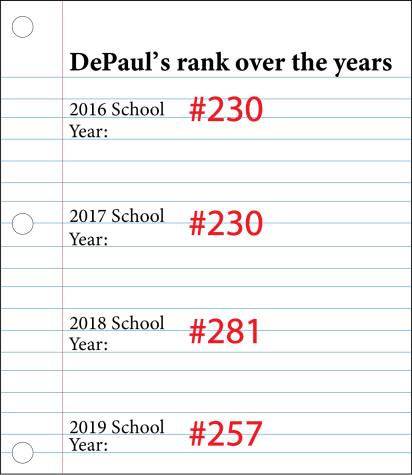
Still, the WSJ/THE rankings have started to place a greater emphasis on categories like value and resources, making things slightly more interesting for non-ivy league students. Berea College, a smaller liberal arts college in Kentucky, ranked No. 1 in the value category. Even with an overall school ranking of 231, Berea topped the value category due to a substantial endowment and the fact that most students are expected to work on campus, allowing the university to maintain a smaller full-time staff and spend most of its budget on students. The school is able to offer an average net price of only $2,862.
DePaul, on the other hand, has a much higher price tag with an average net price of $32,084 according to the WSJ/THE report. And if students are paying a substantial amount in tuition, DePaul’s resources score of 465, relatively poor compared to the DePaul’s other scores, doesn’t seem to match up.
While higher tuition dollars would seemingly equal more resources per student, Boeckenstedt believes that efficient universities like DePaul are penalized in ranking evaluations like this one.
“DePaul has a substantial financial aid budget. We don’t have a big endowment — our expenditures are lower because we are efficient,” he said, adding that if the university was able to somehow charge only half of previous tuitions, it would be penalized in rankings that look at expenditures.
As for the greater focus placed on college outcomes, we asked Karyn McCoy, assistant vice president of the DePaul Career Center, how much weight is actually put on a school name and reputation versus what’s on a resume.
“It varies by industry, but especially as things become more electronic and digital, employers can recruit from anywhere and they don’t have to limit the number of universities in the way they used to,” said McCoy. “The playing field is becoming more level. Internships, jobs, shadowing, all of those things take on a greater weight than just where you went to school.”
CORRECTION: The headline was changed to clarify that DePaul’s ranking has slipped over a four-year trend, despite improving over the last year.


